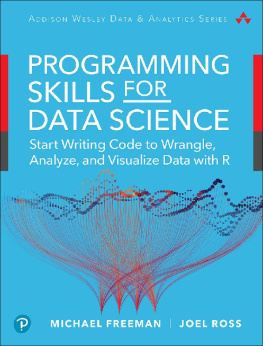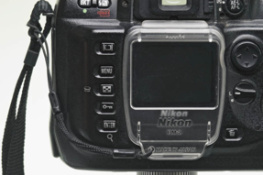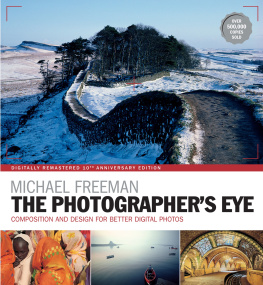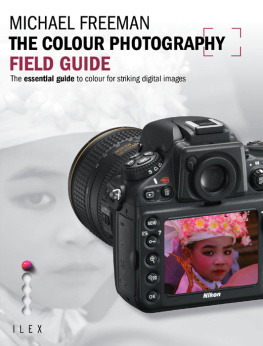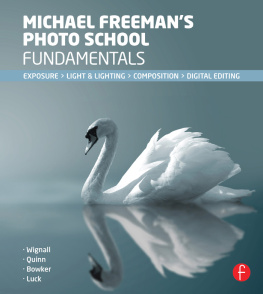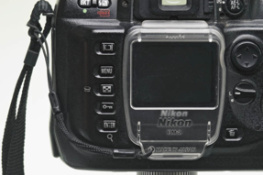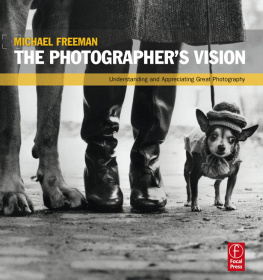Focal Press is an imprint of Elsevier
30 Corporate Drive, Suite 400, Burlington, MA 01803, USA
Linacre House, Jordan Hill, Oxford OX2 8DP, UK
Copyright 2011 The Ilex Press. All Rights Reserved
No part of this publication may be reproduced, stored in a retrieval system, or transmitted in any form or by any means, electronic, mechanical, photocopying, recording, or otherwise, without the prior written permission of the publisher.
Permissions may be sought directly from Elseviers Science & Technology Rights Department in Oxford, UK: phone: (+44) 1865 843830, fax: (+44) 1865 853333, E-mail: permissions@elsevier.com. You may also complete your request on-line via the Elsevier homepage (http://elsevier.com), by selecting Support & Contact then Copyright and Permission and then Obtaining Permissions.
Library of Congress Cataloging-in-Publication Data:
A catalog record for this book is available from the Library of Congress.
Print ISBN-13: 978-0-240-81171-0
Digital ISBN: 978-0-080-96401-0
For information on all Focal Press publications visit our website at www.focalpress.com
This book was conceived, designed, and produced by: The Ilex Press, 210 High street, Lewes, BN7 2NS, UK
Publisher: Alastair Campbell
Creative Director: Peter Bridgewater
Managing Editor: Chris Gatcum
Senior Editor: Adam Juniper
Art Director: Julie Weir
Designer: Simon Goggin
Art Editor: Emily Harbison


CONTENTS
Acknowledgment
INTRODUCTION
C hoosing the exposure for a photograph is both alarmingly simple and infinitely complex; in fact, its one of photographys most absorbing paradoxes.
It is simple because there is ultimately only one dosage of light, controlled as it always has been, since the first view cameras carrying wet plates, by a shutter speed, an aperture, and a film speed. There are no qualifications or subsets, just a fraction of a second, an -stop and an ISO sensitivity. However much agonizing and philosophizing anyone puts into the equation, choosing the exposure still comes back to the same three simple settingsnothing else.
It is also complex because it affects everything about the image and its effect on those who see it. It reaches deep into what the photographer intended and why the photograph was taken in the first place. There are endless subtleties in the brightness, readability, and mood of every part of every scene, as witnessed by the different exposure decisions that different photographers take.
Understanding how and why exposure works as it does is worth a lot of effort, not only because it helps you to get it right at will and with total confidence, but also because it helps you decide what right isand thats much more important in photography.
WEBLINK
Some of the pictures shown in this book are clearer on a computer screen, which show a higher dynamic range than the printed page can. For that reason, where it is beneficial, you can log onto the address below to see the images wherever you see this logo.
http://www.web-linked.com/mfexus


CHAPTER 1:
FAST-TRACK AND FOOLPROOF
W hen it comes to photography, you should beware of any self-proclaimed system. Systems tend to be invented and promoted either by photographers who have a very particular way of working that might suit themselves perfectly but is not necessarily adaptable, or by people who have little experience of the practicalities of shooting. I write this knowing full well that Im presenting here what looks suspiciously like just such a creature. The difference is, and my justification also is, that this is a distillation of the ways in which many professionals make exposure decisions. Most professionals, of course, do not use what they would ever themselves call a system, but when you live, breathe, and shoot photography for a living, day in and day out, you develop and hone ways of working that behave very much like a system. Well, I would say that, wouldnt I?
As usual, my model for this book is the way in which professional photographers do things. Professional means someone who shoots on assignment regularly for a living, and I believe this is important. Not that professionals have any special dispensation to take better photographs. That kind of talent can rest innately with anyone, and be improved by anyone, though, of course, successful professionals are exploiting that skill. No, what makes the professional approach worth following is that we do photography all the time, and under pressure to deliver the goods every time.
In a slightly unusual departure from most of my books, Ive carved out a short and succinct first chapter that is partly a summary of what follows, and partly a way of stressing the decision flow. After this Ill go into much more detail about individual aspects of exposure, all of which will take much longer to read than to do. Here, for the next few pages, I want to be completely practical and acknowledge that when you are shooting there is usually not much time at all for anything. Exposure decisions normally have to be made very quickly indeed, often without consciously thinking them through. But the decision flow is still there, however there is a short amount of time for it. This, then, is how it really is.
THE BASIC METHOD
I m taking a slightly different approach in this book by trying to explain everything right at the start and as concisely as possible. This may seem almost impossible, but in keeping with the subjectwhich is both simple and complex at the same timetheres a real need in photography to grasp the essentials in a single perception, followed by gradually absorbing all the implications. Photography is, in any case, always about the moment, and while there is much to learn at leisure there is also the entirely understandable, even necessary, impatience just to shoot.
There are many different aids to exposure, and as many preferences among photographers for choosing camera settings. Camera manufacturers are well aware that this is the crucial issue for most photographers, so they have developed a raft of technical solutions, with each trying to outperform the others. The result is a wonderful choice, but also a chaotic array of methods, many encumbered by jargon for no better reason than to make them seem superior to the competitors versions.
I plan to cut through this nonsense, and my model is, as always, the way professionals like myself think and work. Being a professional photographer (which is to say, someone who earns their living by getting paid by clients to shoot, not by just teaching or writing about photography or by gaining expertise at messing around with photographs in Photoshop) does not mean that the work is any better than that of a dedicated amateur. Actually, often the opposite is the case. What it does mean, though, is constant and realistic attention to shooting on a daily basis.
A professional photographer has the advantage of doing this all the time, building up experience that counts for more than many techniques. Most professionals have little patience with complicated novelties and most choose exposure almost instinctively. I have many friends who will have no sympathy for what Im about to do, which is to analyze the process and spell it out, but thats because they do it as a matter of course. One thing I should warn you about is the unavoidable wordiness of the methods I describe here. Even the short summary that follows will take a minute or so to read and absorb, but putting it to use should take only a second or so. Reflexes in assessing a scene and choosing the exposure can always be improved, and they should be.
Next page

